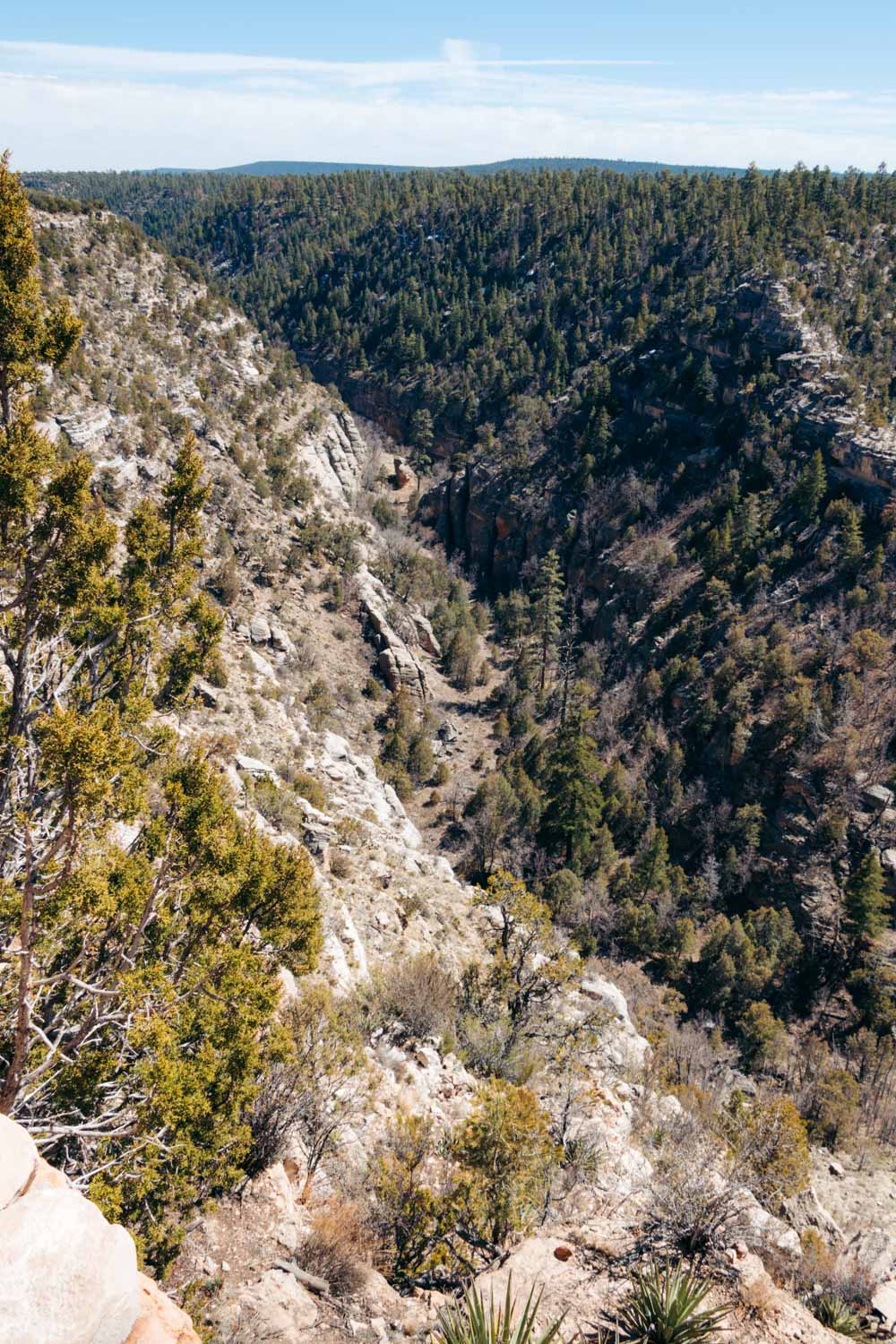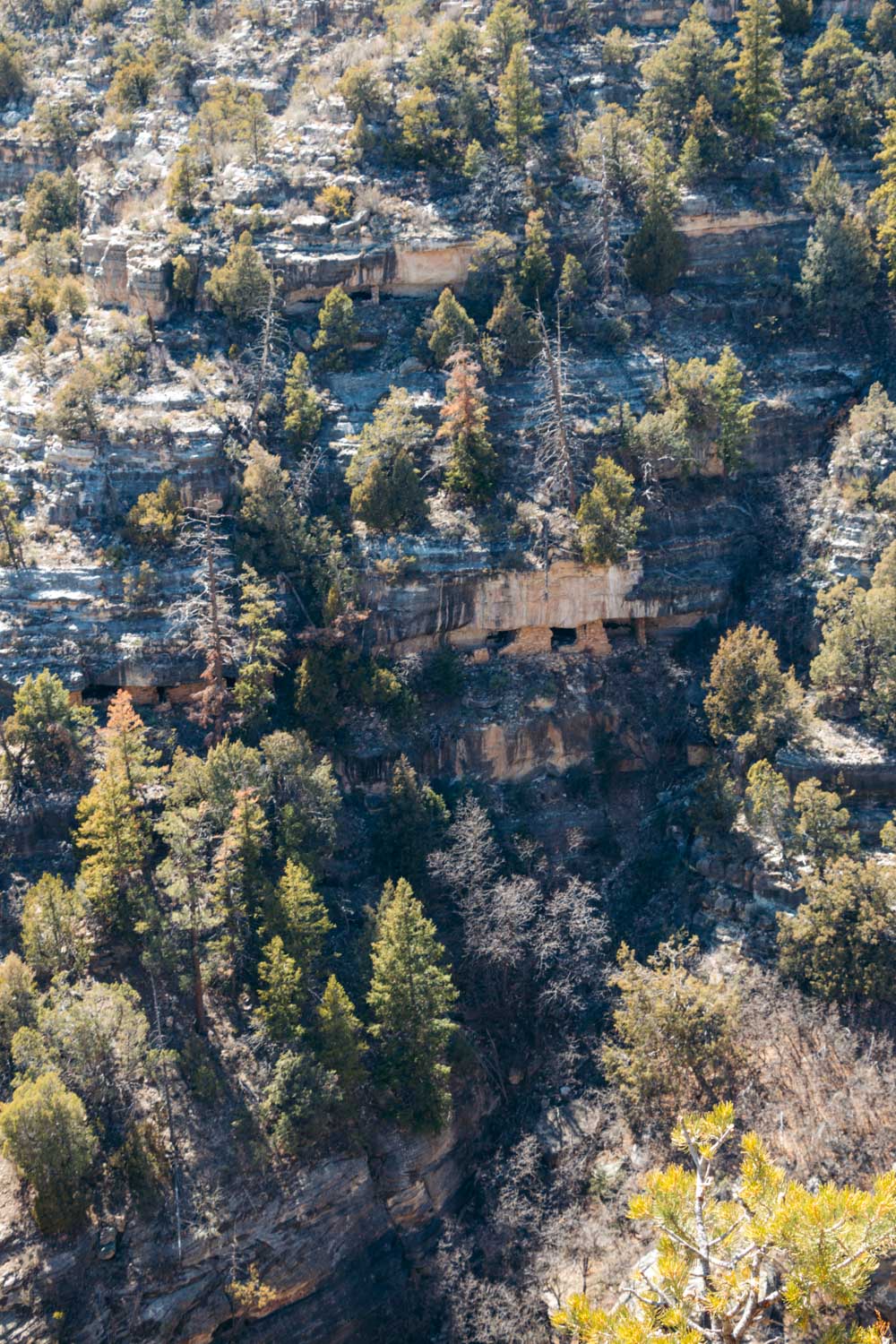Visiting Walnut Canyon National Monument was a dream come true. A place that takes you to the doorstep of ancient cliff dwellings can’t be nothing but mysterious and dreamy after all.
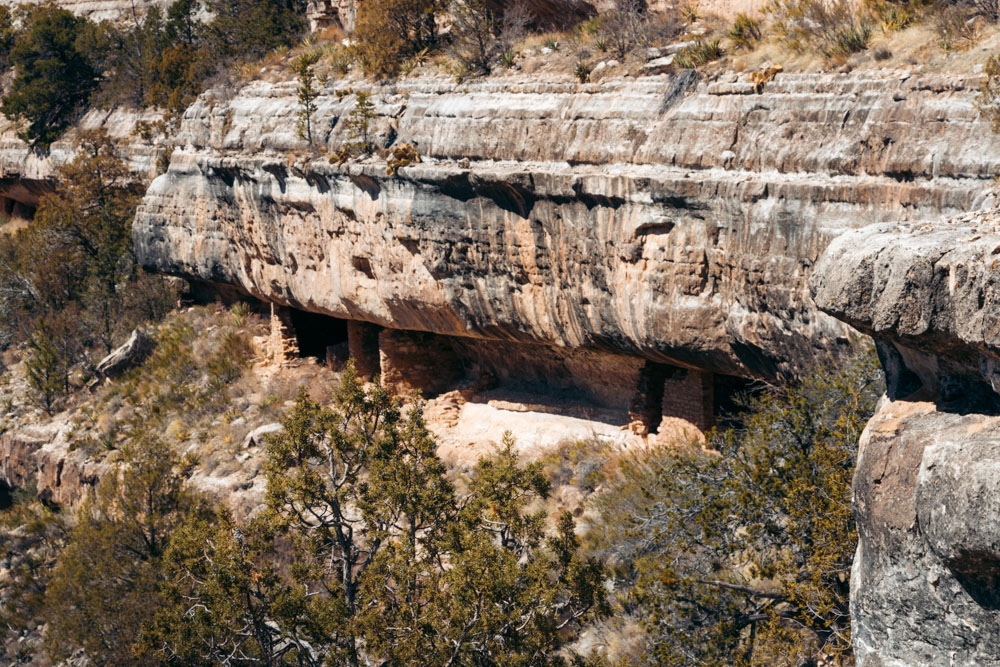
A Complete Guide to Visiting Walnut Canyon National Monument, Arizona
Some small, siting close to each other openings in a cliff wall looked back at me. With no apparent trails leading to them and an abrupt drop on the other side, they looked intriguing, almost unreal, to say the least. How somebody could get in and out of these hideouts centuries ago.
I was browsing the Internet for places to visit on our road trip through Arizona when I first came across Walnut Canyon National Monument. Regarded as one of the best-kept secrets in the state, it became my next obsession.
Eager to see the ancient cliff dwellings, I changed our plans at once and tried to adjusts our itinerary so that we would end up visiting the area near Walnut Canyon National Monument. In this case, it would be only a matter of time for us to drive into this protected region on the outskirts of Flagstaff.
In the end, we chose different route. Only a year later, during our road trip through the American Southwest, we could finally visit and hike in Walnut Canyon National Monument. It took us just a few hours to explore the area. But the place was certainly worth this short detour.
If you’re ready to explore this part of Northern Arizona by yourself, use this guide to visiting Walnut Canyon National Monument as your first travelogue.
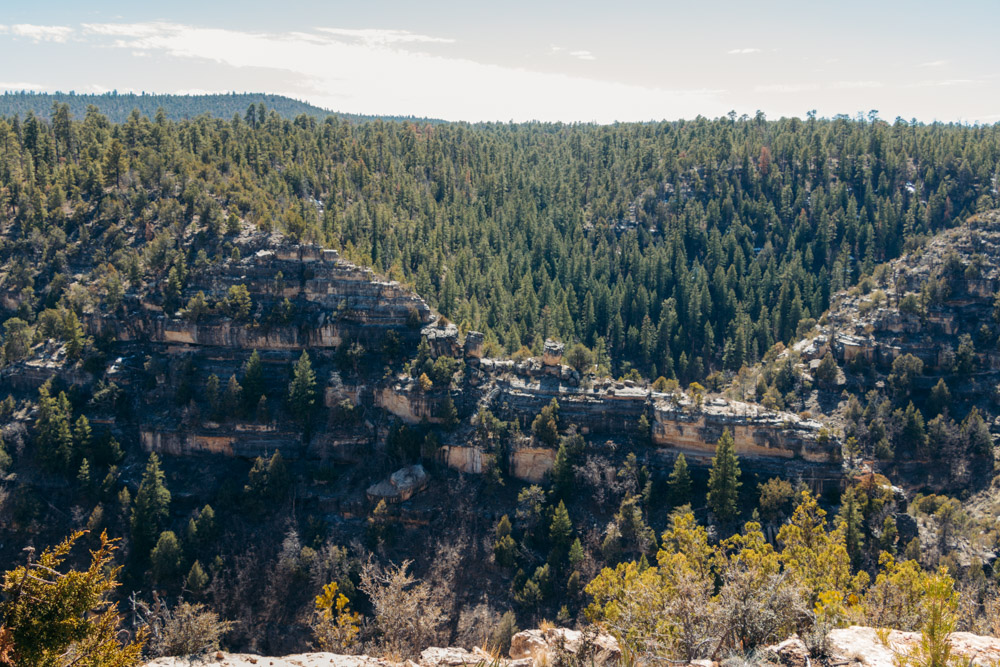
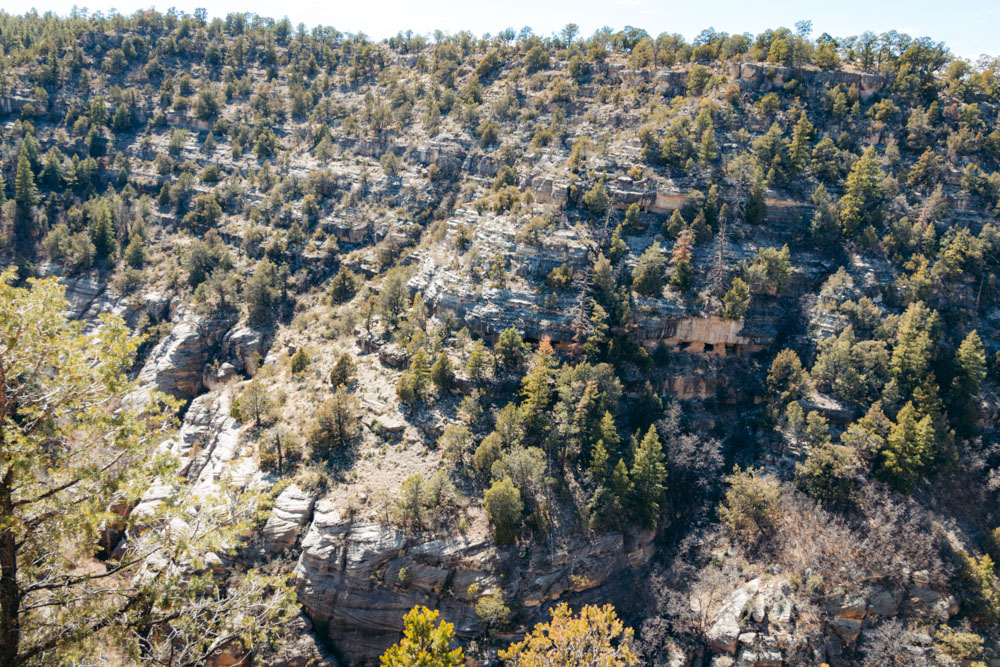
THE ULTIMATE GUIDE TO VISITING WALNUT CANYON NATIONAL MONUMENT, ARIZONA
A Few Words about Walnut Canyon National Monument
The fortified ancient dwellings had first appeared in Arizona nearly 800-900 years ago. In north central Arizona, the ancient tribes made their homes in what is known today as Montezuma Castle. Less than an hour drive from Flagstaff, Wupatki National Monument still astounds with a complex system of ancient pueblos. Not the primitive cliff dwellings, but a town that once was a popular trading center.
The rugged area on the outskirts of present-day Flagstaff had yet provided enough opportunities for carving out some of the first permanent abodes in the massive cliffs. These partially survived dwellings have become an essential part and the main reason for visiting Walnut Canyon National Monument today.
The Era of Sinagua People
Despite (or on top of it) the hard to reach location that worked perfectly to protect the Sinagua people from unexpected attacks by passing by tribes, the region was rich in plants and animals. The natural abundance was sufficient to sustain the first permanent settlers.
Yet the Sinagua people, which in Spanish means “without water”, had bigger ambitions. Taking advantage of the rich soil and enough precipitation, they grew their own vegetables on the cliff rim.
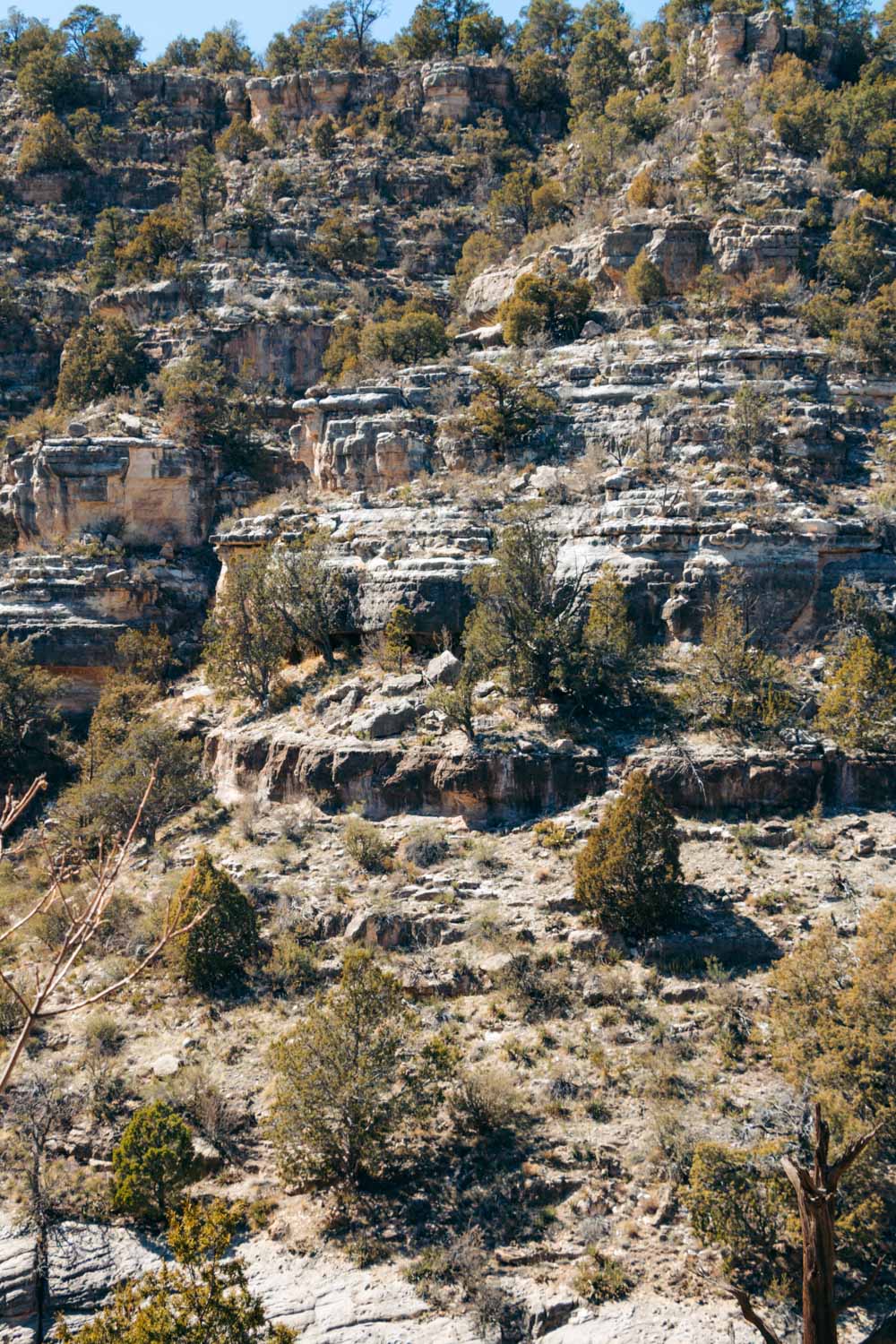
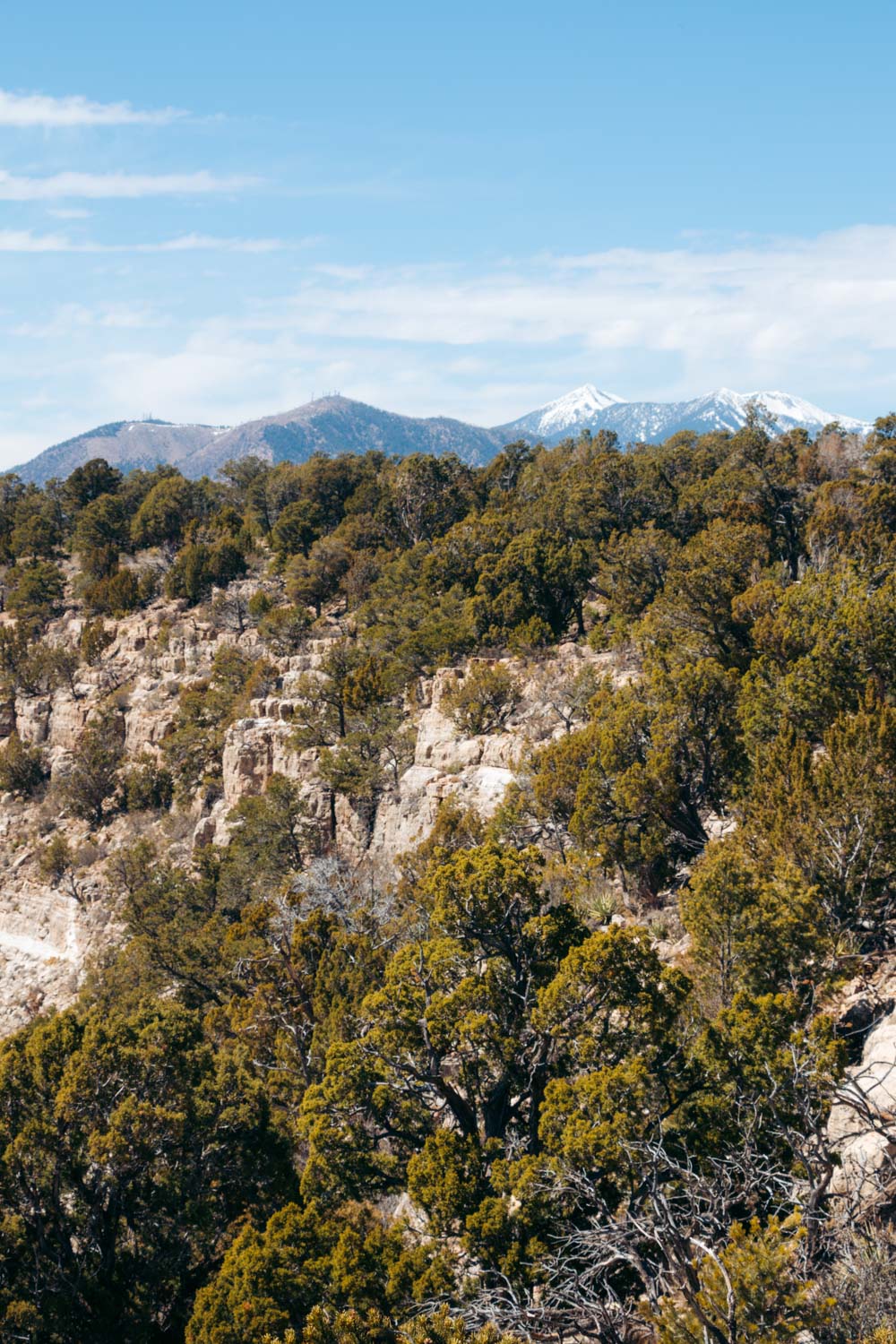
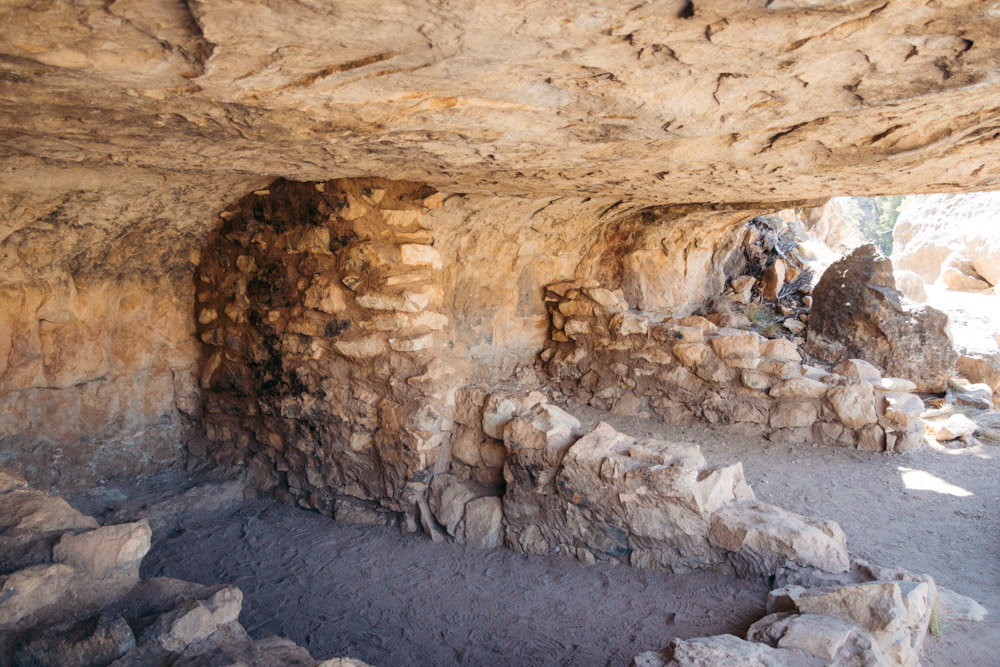
Some 180 feet below, along the perimeter of the cliff, they carved out their one-room quarters in the rocky walls. Visiting the ancient dwellings in the present-day Walnut Canyon National Monument region was indeed impossible for the outsiders. The Sinagua people used primitive ladders and ropes to get in and out of the cliff houses.
The first permanent settlers lived in the Walnut Canyon National Monument area for a little bit over 100 years, between 1125 and 1250. When they finally left, their cliff dwellings stayed untouched and well-preserved for about 600 years.
In the 1880s, construction of the railroad enable many adventure and souvenir hunters visit the Walnut Canyon area. The newcomers had little concern about preserving the area for future generations. Locals fought back, trying to protect what was left of the ancient settlement. Finally, in 1915 the rugged volcanic Walnut Canyon area was declared a national monument.
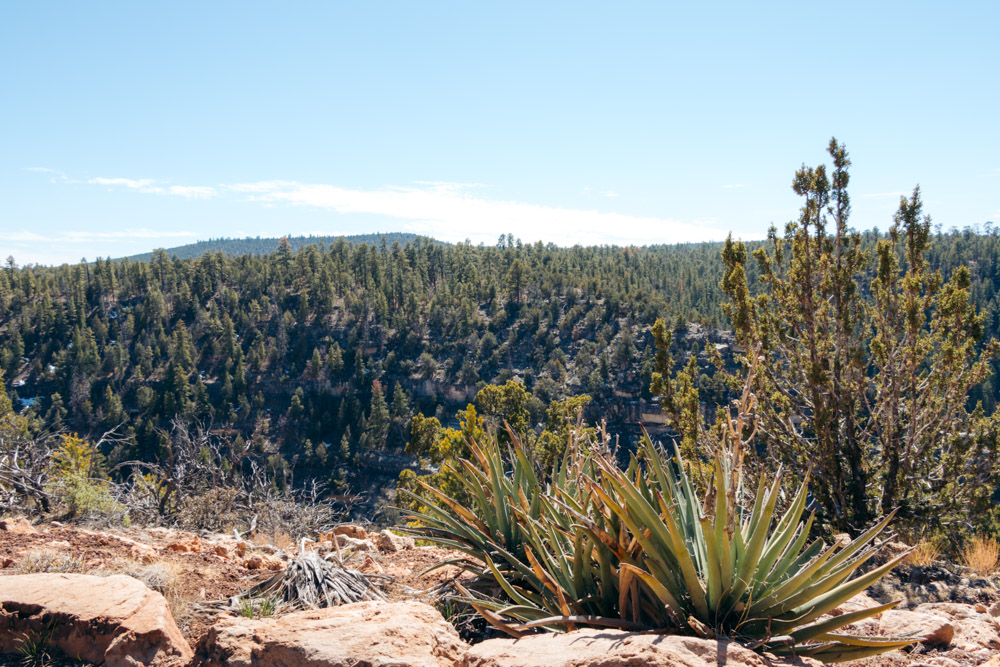
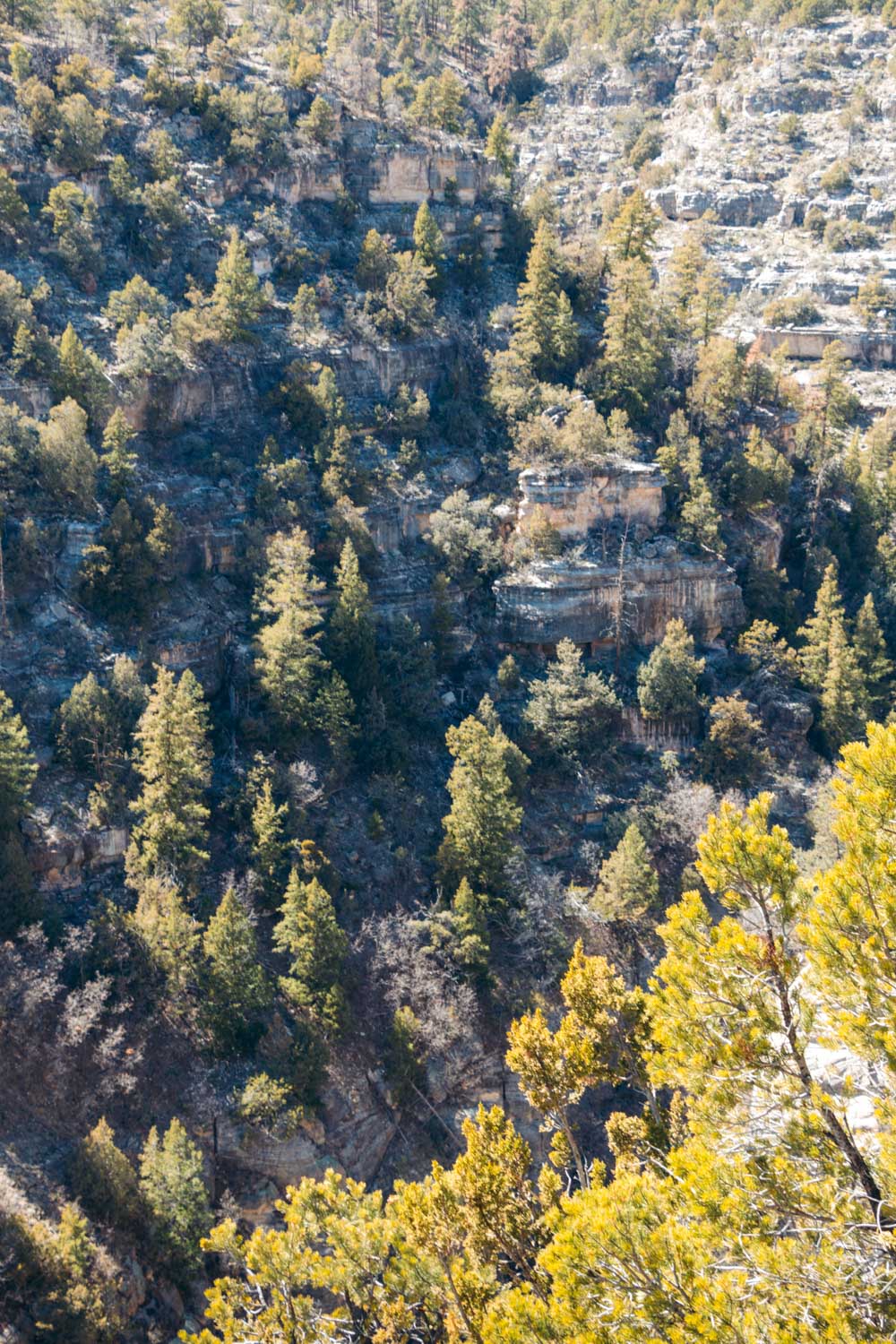
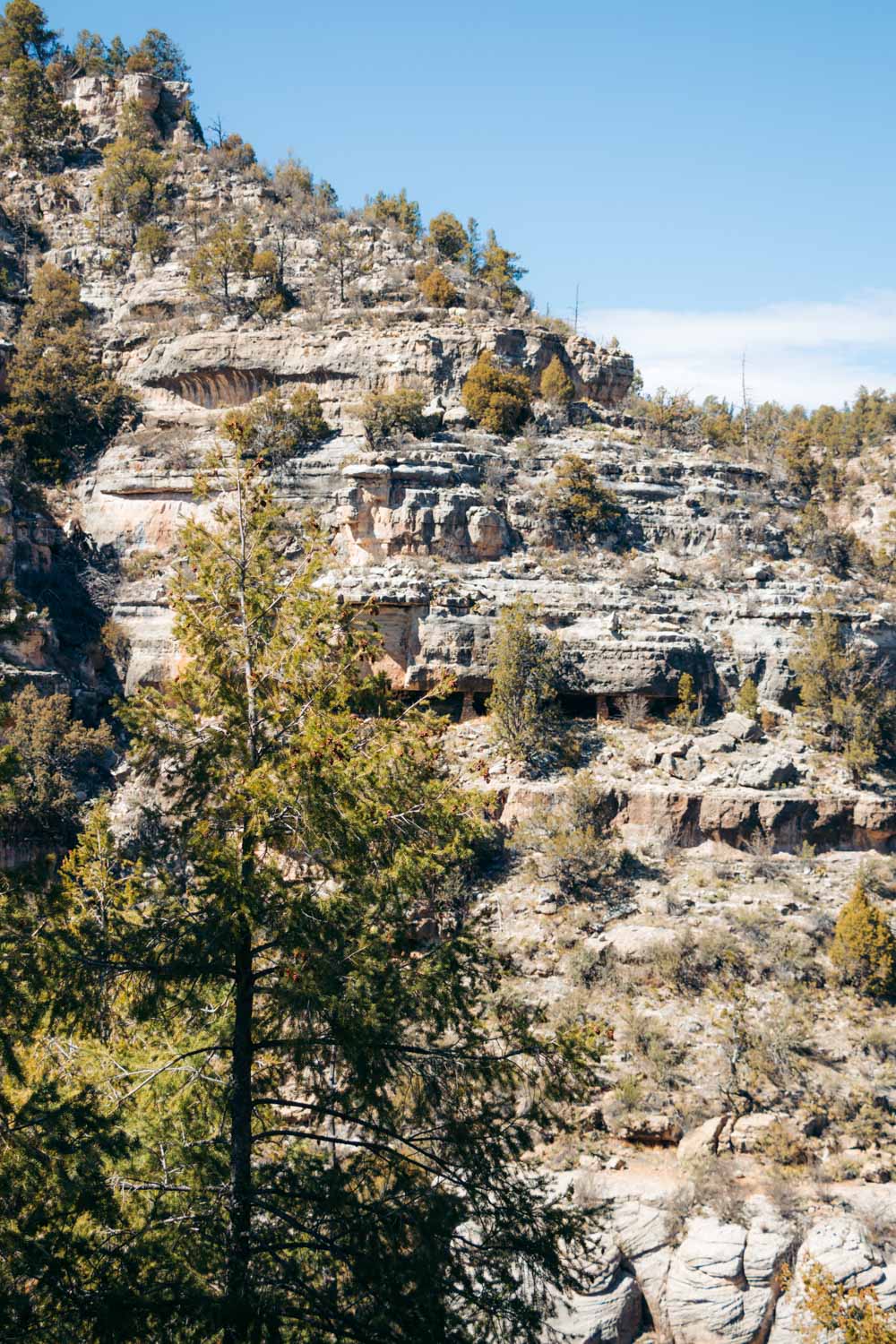
How to Visit Walnut Canyon: Location
A visit to Walnut Canyon National Monument often goes hand in hand with a trip to Flagstaff. Located mere 10 miles east of the city center, the area spices up the adventures in Northern Arizona with its rich historical heritage.
So to reach Walnut Canyon from Flagstaff, follow I-40 E. Then take exit 204 and continue on until you arrive at an entrance to the monument. Park at a large lot inside Walnut Canyon and follow a paved path that leads to two hiking trails.
The majority of the first-time guests start their visit to Walnut Canyon National Monument at the Walnut Canyon Visitor Center, located at the head of the parking lot. The hiking trails begin in front and behind the center. A gift shop and restrooms also nestle right here.
A Guide to Visiting Walnut Canyon National Monument: Map
A Guide to Visiting Walnut Canyon National Monument: Things to Do
1. Hike Rim Trail
The easiest of the two trails, the Rim Trail looms to the right of the Walnut Canyon Visitor Center. Stretching for less than one mile, it runs along the rim. To its left, interpretive signage surrounded by some native to the area plants tell the visitors about the flora and cultivation practices in the area. To the right, astonishing views of the deep canyon add edginess to the place.
A number of benches nestle along the Rim Trail. All of them face the chasm, allowing to take in the vistas of the hidden among the ponderosa pine forest ancient dwellings from a distance.
This part of your visit to Walnut Canyon National Monument ends at yet another overlook. The trail doesn’t run beyond this point, at least not the designated for hiking section. To get to the Walnut Canyon Visitor Center from here, turn back and enjoy the same route you took earlier.
Trail Facts
- Distance: 0.7-mile, round-trip trail
- Difficulty: Easy
- Time: 30-40 minutes
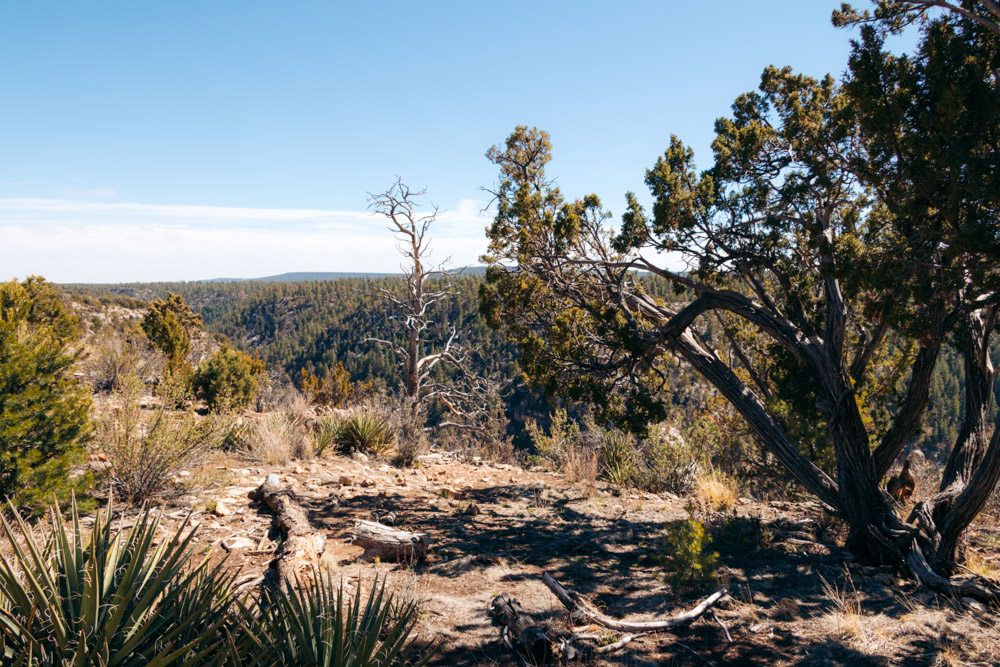
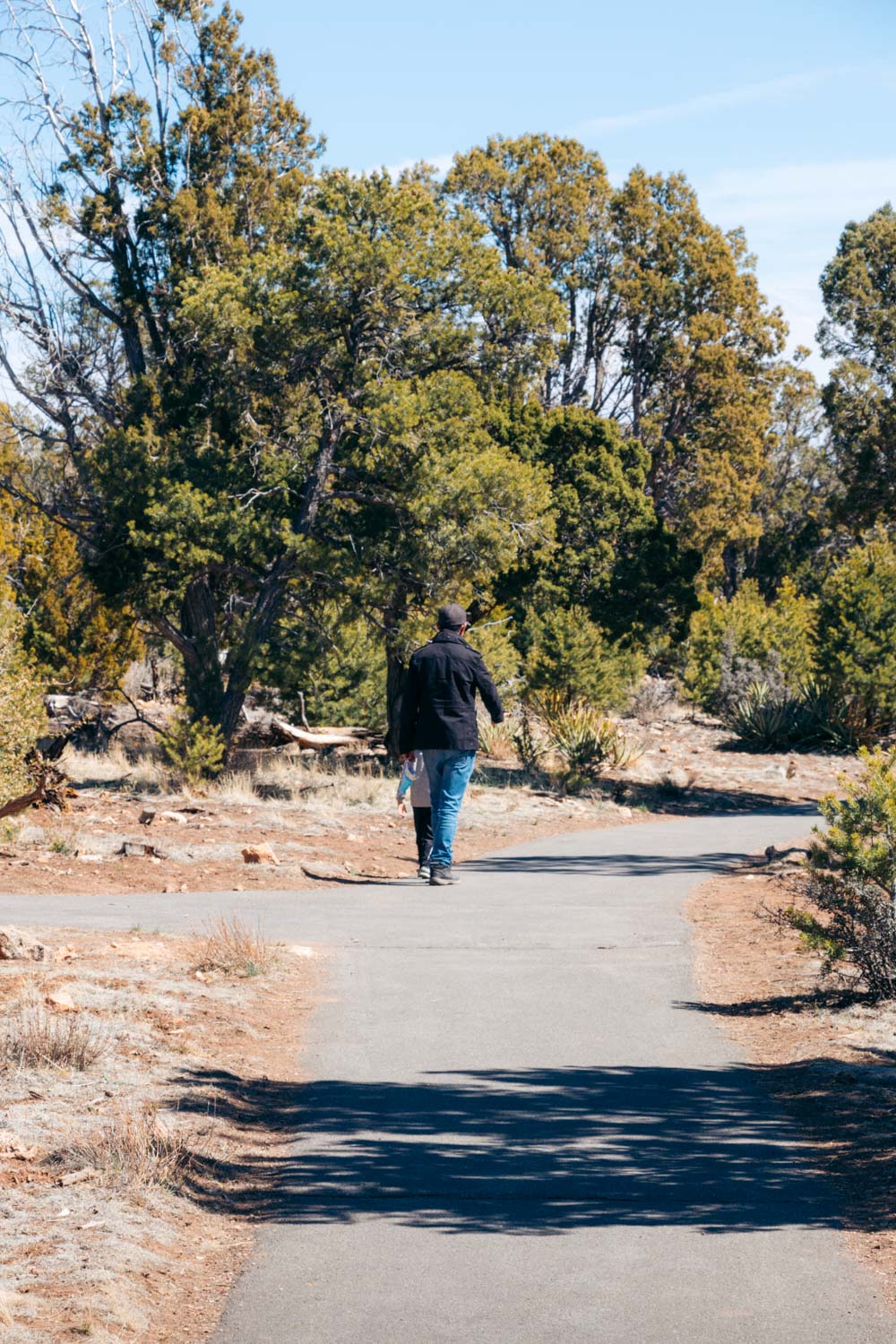
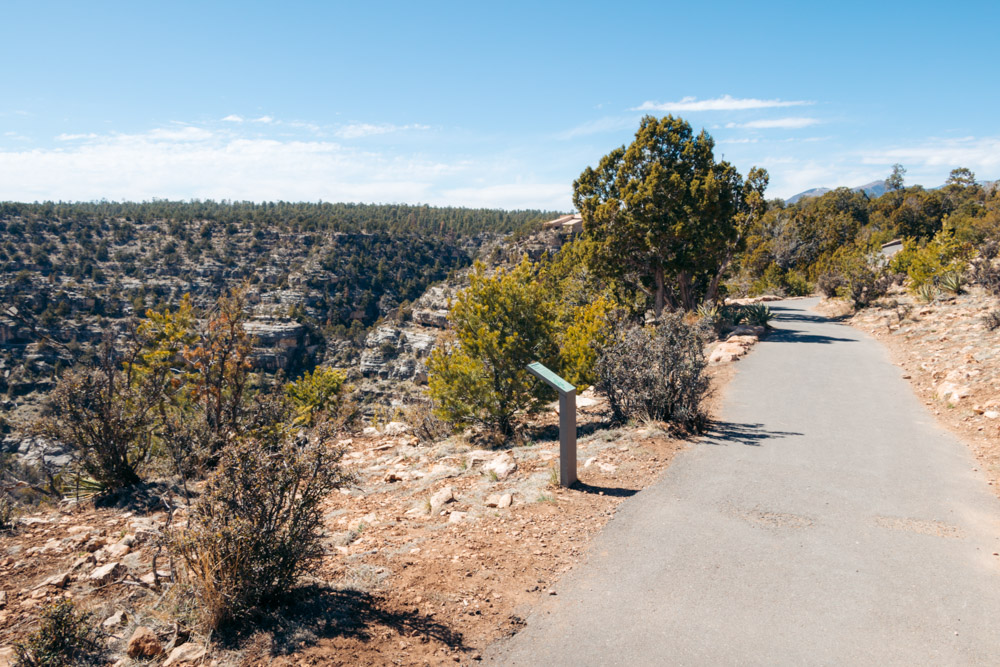
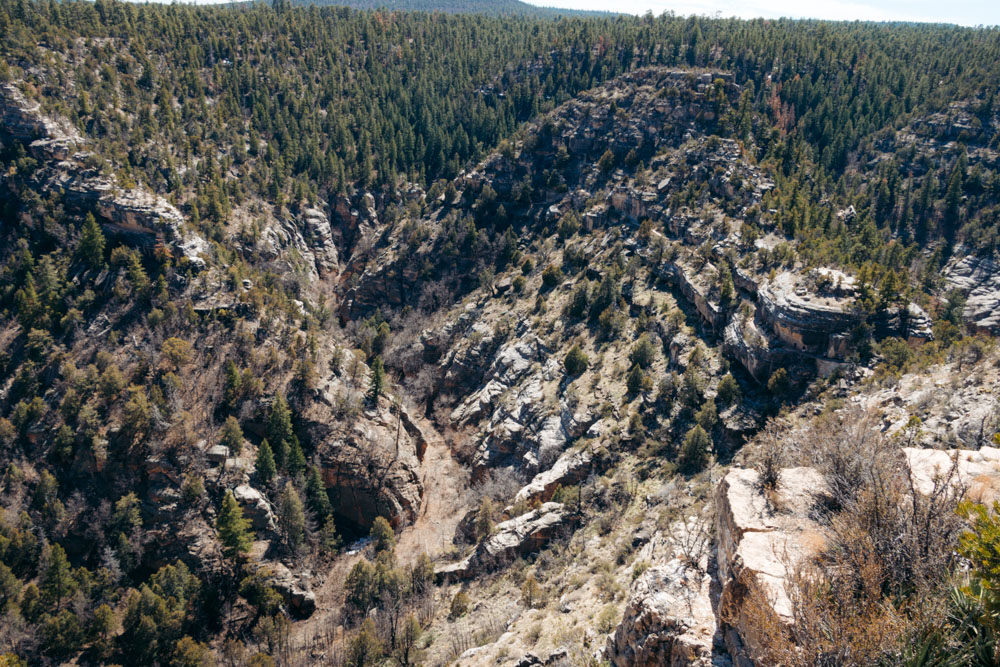
2. Hike Island Trail
The highlight of any visit to Walnut Canyon National Monument is, however, the Island Trail. Similar to the Rim Trail, this loop path starts at the Walnut Canyon Visitor Center. A series of stairs with railings take the hikers down the cliff, dropping some staggering 370 feet at once.
This is by far the hardest part of the Island Trail. You might not feel it just yet. But once you start climbing back to the canyon rim, you’ll surely shed some sweat.
The trail levels out at the bottom of the stairs. From here, the visitors of Walnut Canyon are welcome to slow down or speed up, depending on their interests and time available. Yet reading abundant signage along the trail is greatly recommended. The signs with a few illustrations complete the whole picture, providing you with some interesting facts and theories about the life of the first settlers.
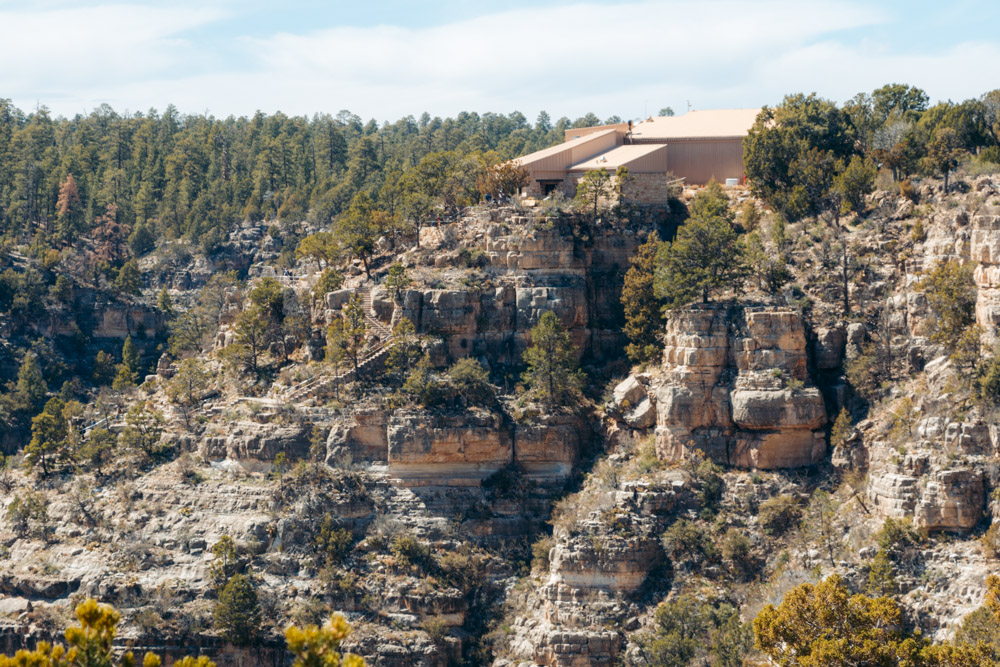
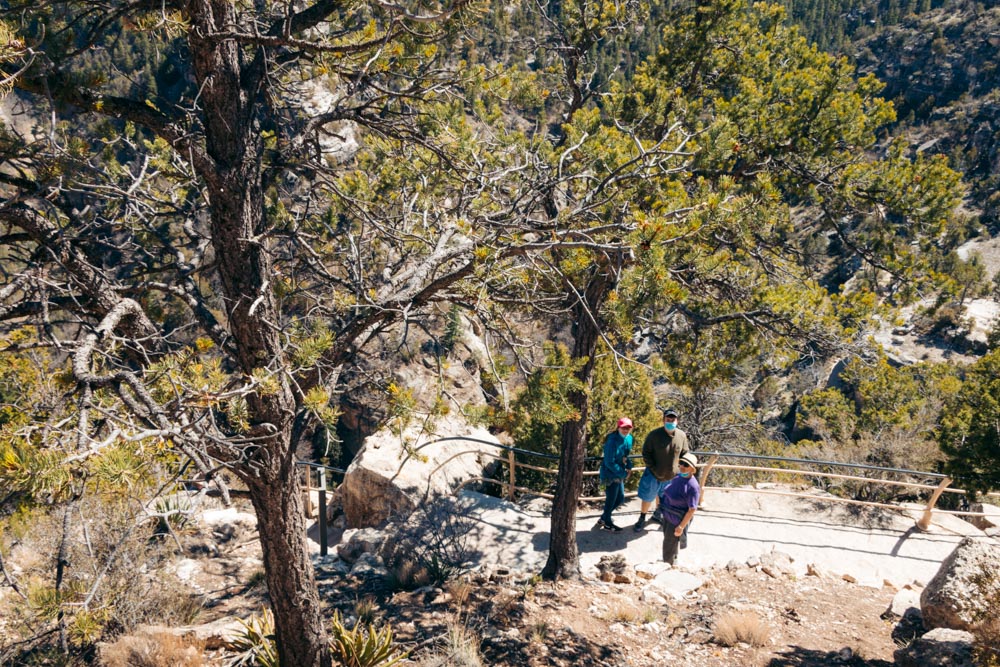
Apart from the interpretive signage, 25 of the ancient cliff dwellings sit along the Island Trail. Some of them are so wide open that you can easily peer inside. Leaving the trail and walking into the ancient dwellings, however, shouldn’t be on your mind.
Truth be told, at this point it’s easy to disregard Walnut Canyon National Monument’s visitor’s regulations. The cliff dwellings are right here and rangers are not always on the trail to stop this prohibited curiosity. But the main reason Walnut Canyon National Monument was created is to stop these unwelcoming “visits”. So do your part and preserve the unique place for future generations.
The Island Trail loops the cliff and returns back to the stairs that slowly but surely take you to the Walnut Canyon Visitor Center.
Trail Facts
- Distance: 1-mile loop trail
- Elevation change: 370 feet
- Difficulty: Moderate to strenuous
- Time: 1 hour
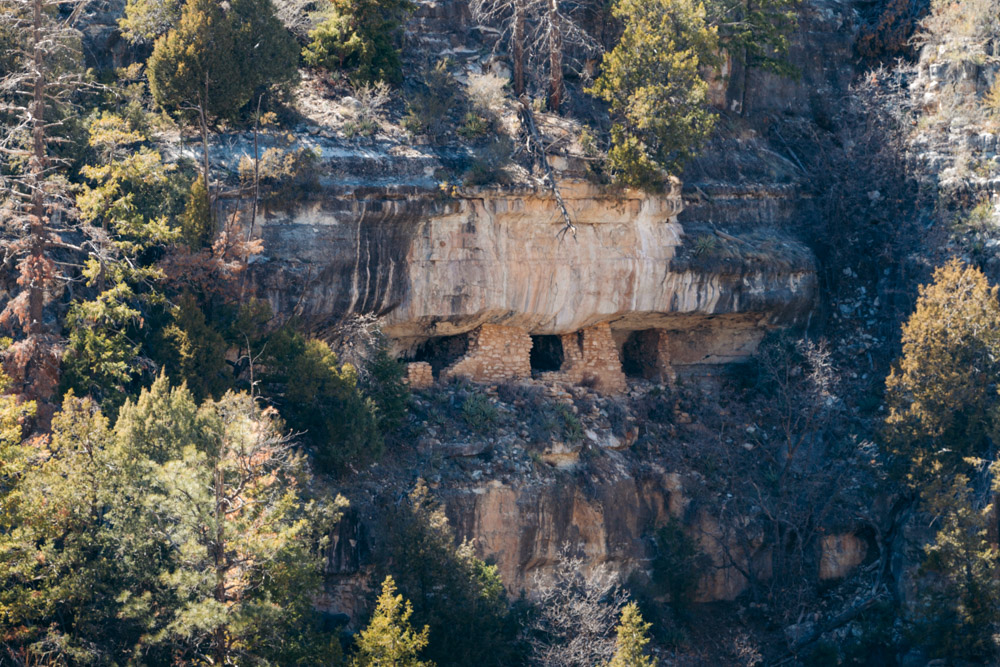
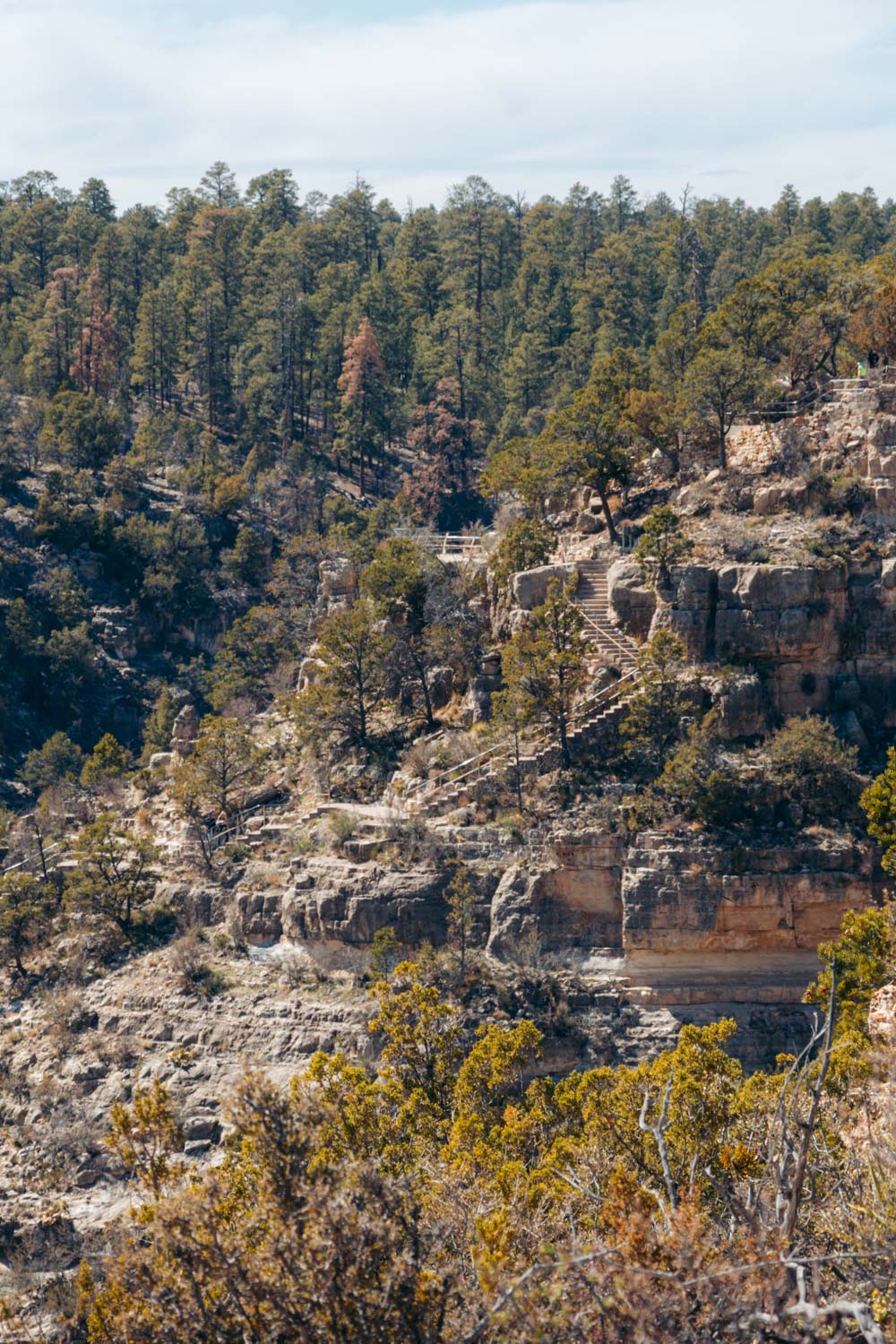
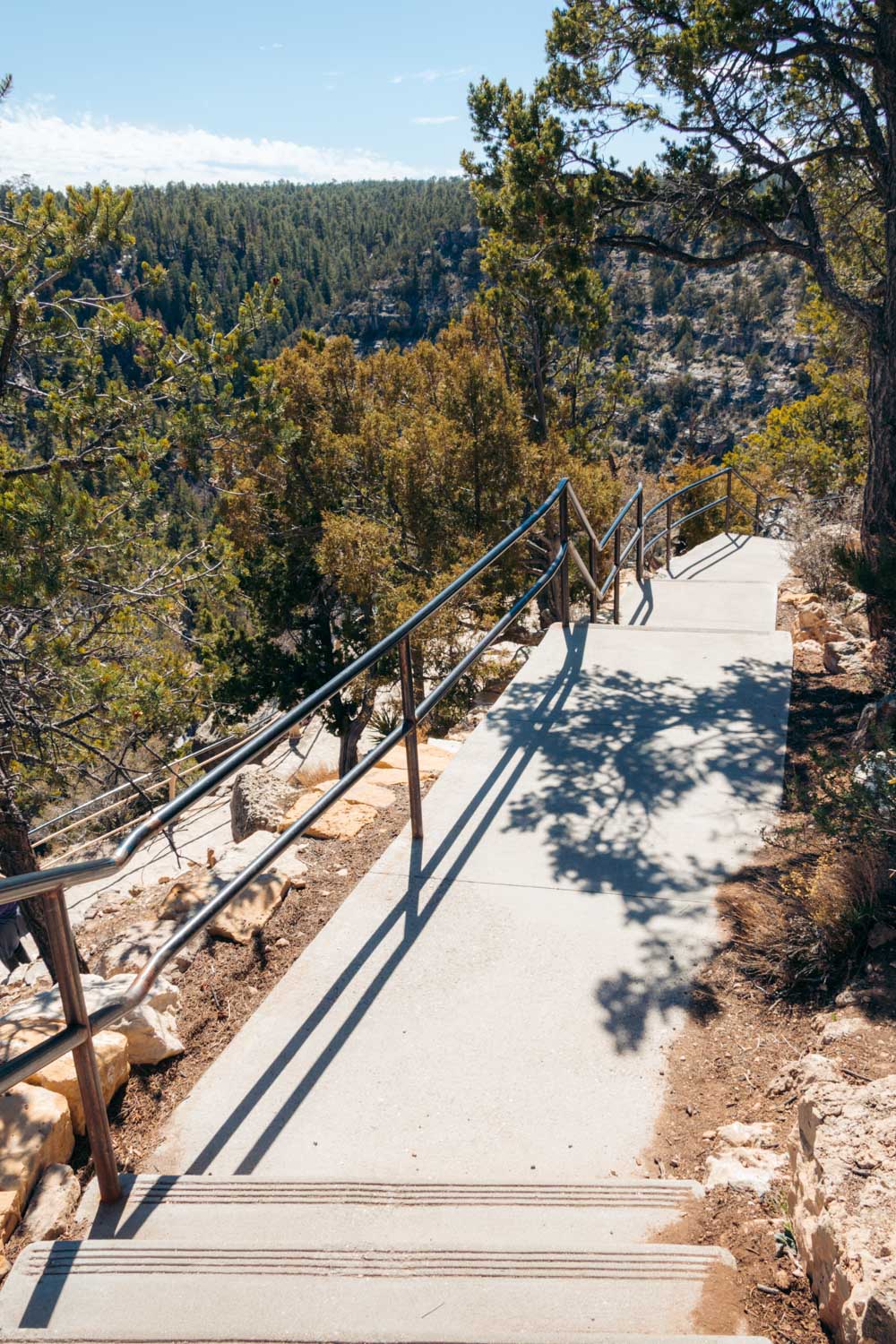
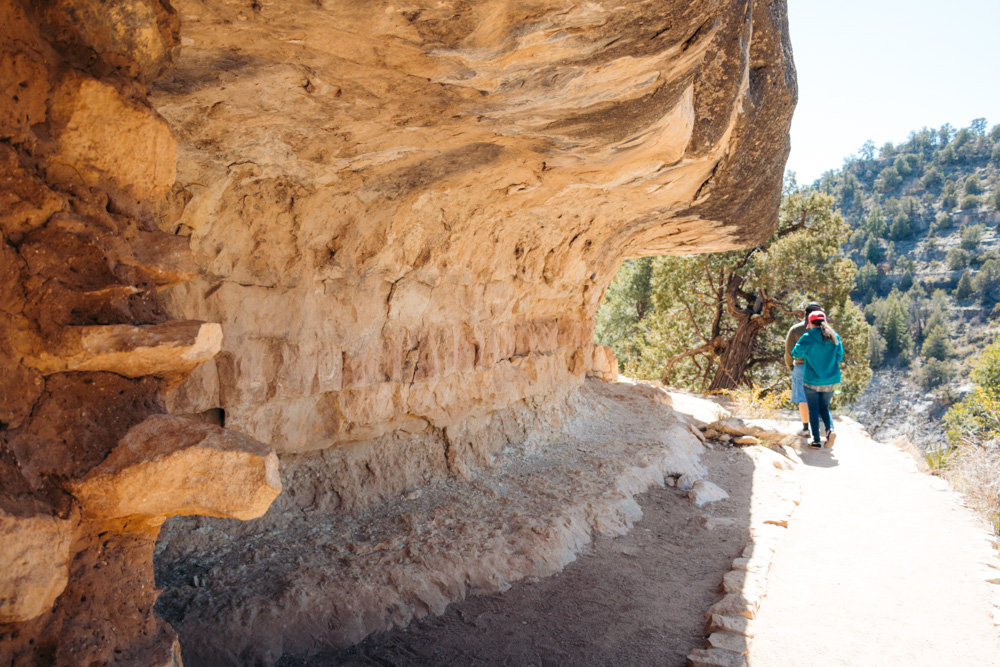
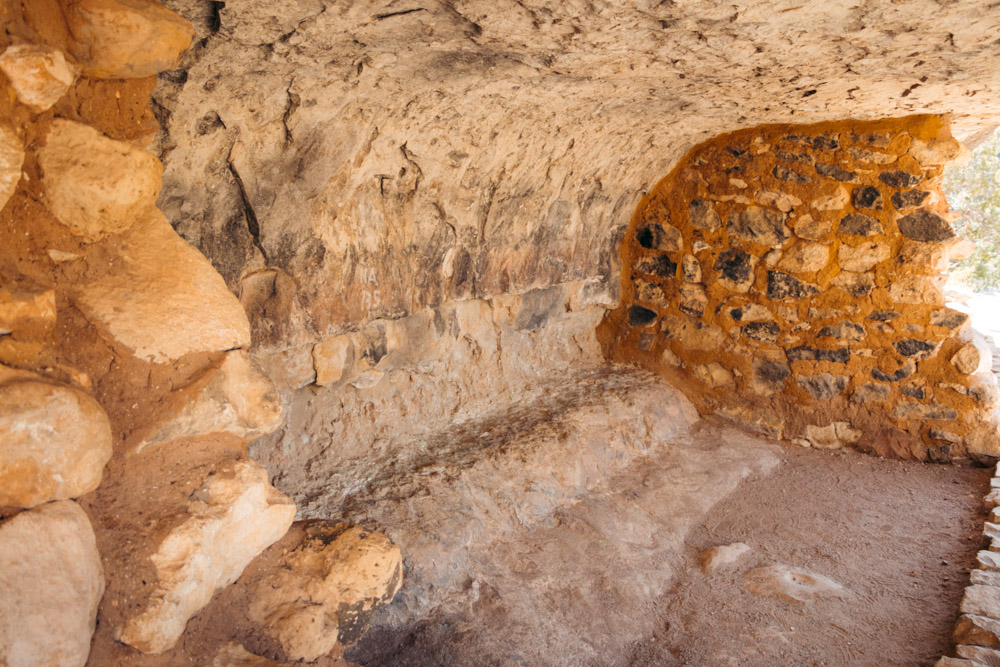
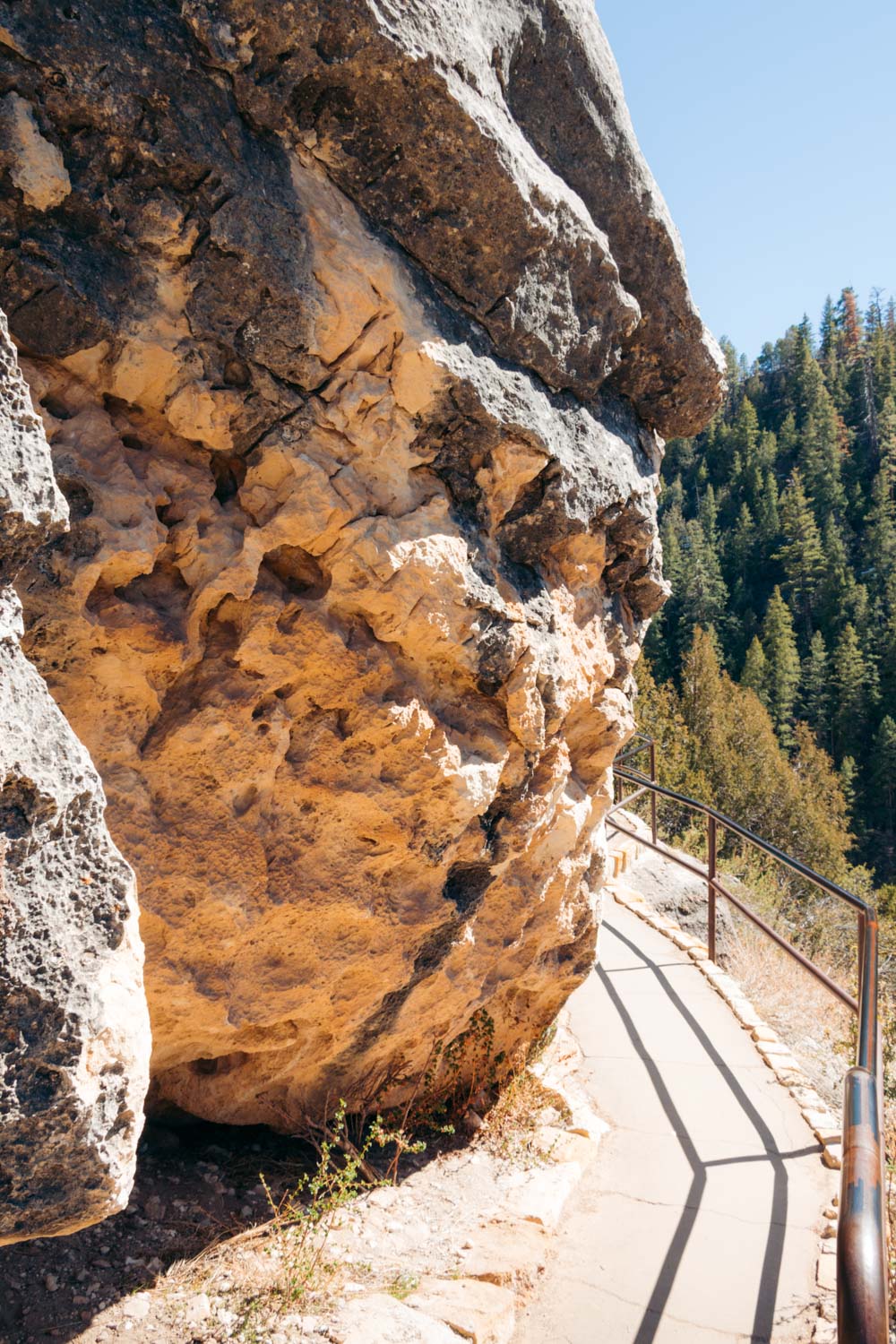
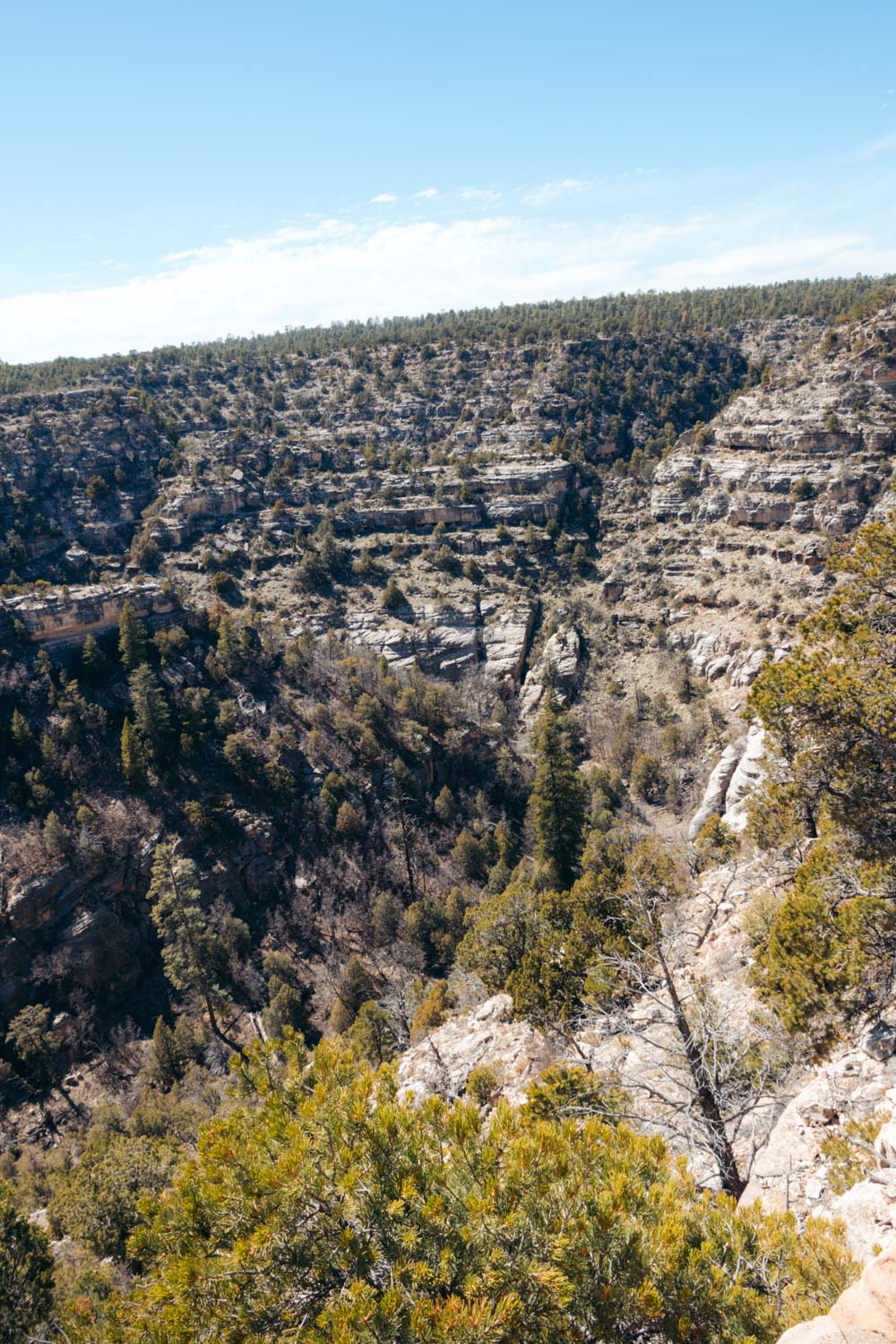
When to Visit Walnut Canyon National Monument
Visit Walnut Canyon National Monument in summer or winter to see different sides of the ancient dwellings. While the evergreen trees surrounding the monument add little to no changes to the dense forest in fall or spring, fresh blanket of snow may cover the ground from late October through February.
The trails are open all year round. Yet those who visit Walnut Canyon National Monument in winter should exercise extra caution while hiking down the snowy and often icy stairs along the Island Trail.
The best time of the day to visit Walnut Canyon National Monument is always morning or late afternoon. The trails are virtually empty at these times.
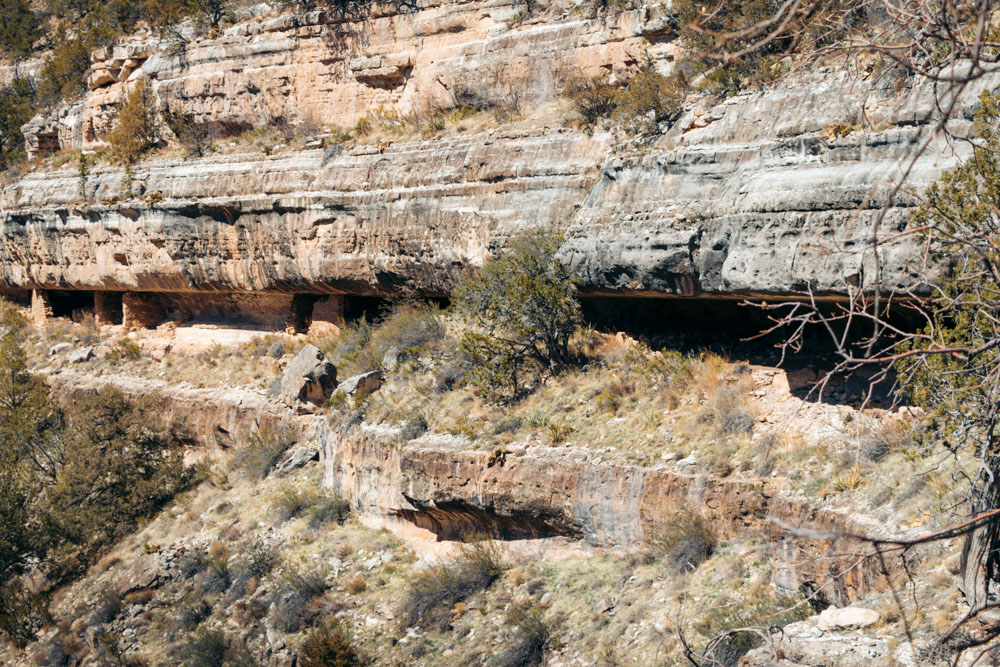
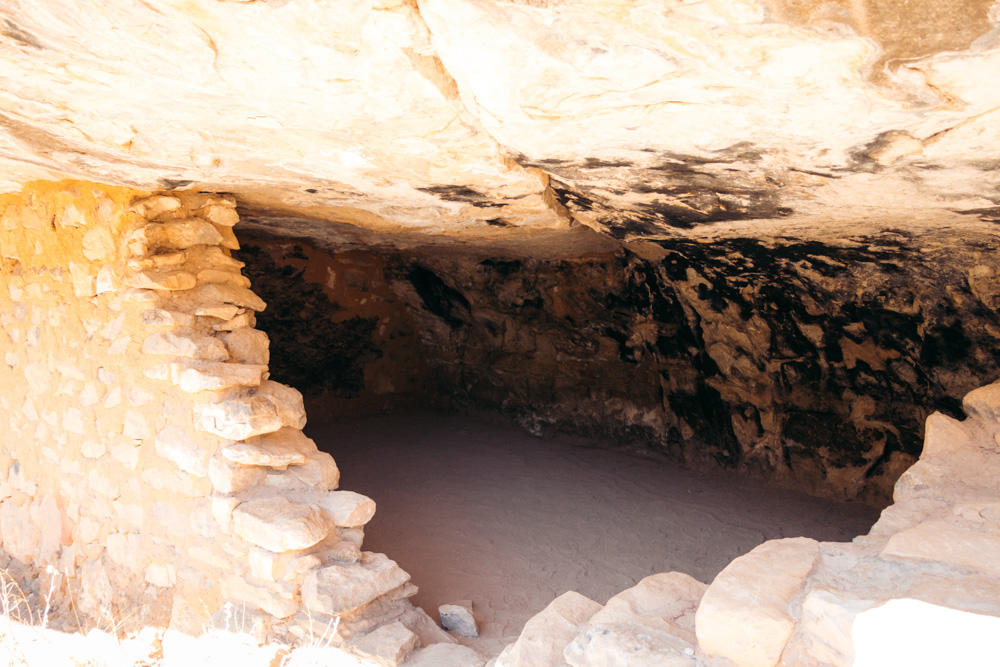
Things to Know before Visiting Walnut Canyon National Monument
Hours
Walnut Canyon National Monument welcomes the visitors daily from 9:00 am until 4:30 pm. The place closes its doors once a year, on Christmas Day. If you fancy a hike along the Island Trail, plan your visit to Walnut Canyon no later than 3:00 pm. The trail closes one hour earlier than the monument.
Admission
A day visit to Walnut Canyon National Monument costs $25 per vehicle. The ticket is valid for 7 consecutive days.
Similar to some other national monuments in the area, such as Wupatki National Monument and Sunset Crater Volcano National Monument, the place falls under the federal protection. So you can use your annual America the Beautiful Pass to visit Walnut Canyon. The pass allows you to access all U.S. national parks and the majority of the national monuments.
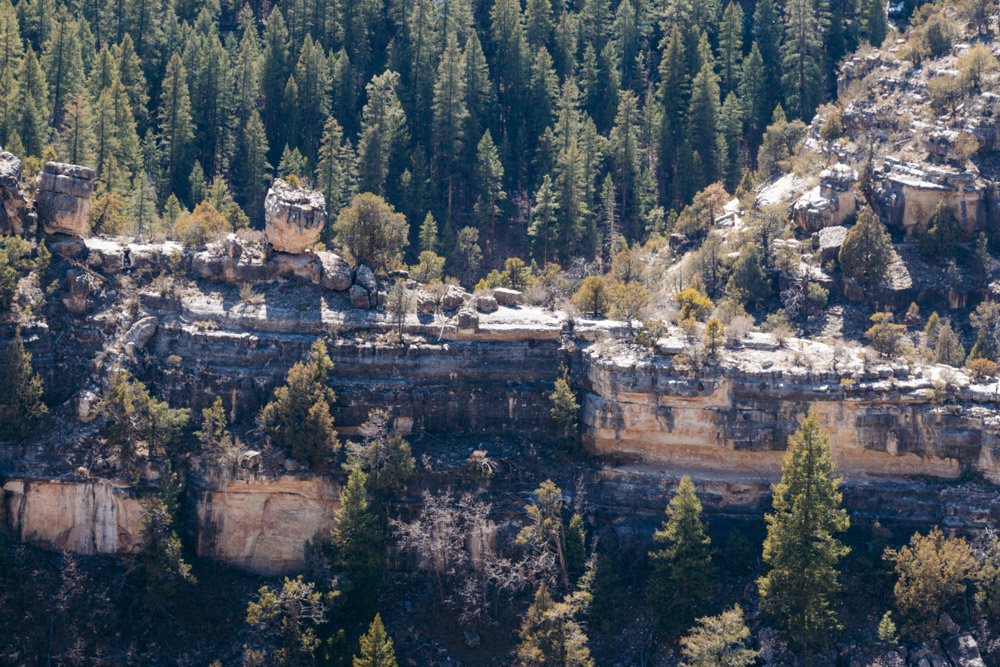
Visiting Walnut Canyon with Pets
No pets are allowed in the Walnut Canyon Visitor Center and on the trails.
No Off-Trail Wandering
This also includes walking into the cliff dwellings. Keep the fragile terrain and the ancient ruins of Walnut Canyon protected so many others can enjoy them during their visits.
Don’t Put Walnut Canyon National Monument’s Flora and Fauna at Risk
A visit to Walnut Canyon National Monument doesn’t end on the viewing of the cliff dwellings. The area astounds with its unique flora and fauna that are also protected. Any damages or threats to either plants or animals result in substantial fines.
Read Next
- Top 8 Things to Do in and near Williams, Arizona, for Outdoor Adventurers
- How to Visit Sycamore Falls, Arizona
- How to Hike Cathedral Wash Trail, Arizona
- One Day in Lake Havasu City, Arizona: The Best Places to Visit and Things to Do
- Top 10 Hidden Gems and Best-Kept Secrets in Arizona
- 7-Day American Southwest Road Trip Itinerary
